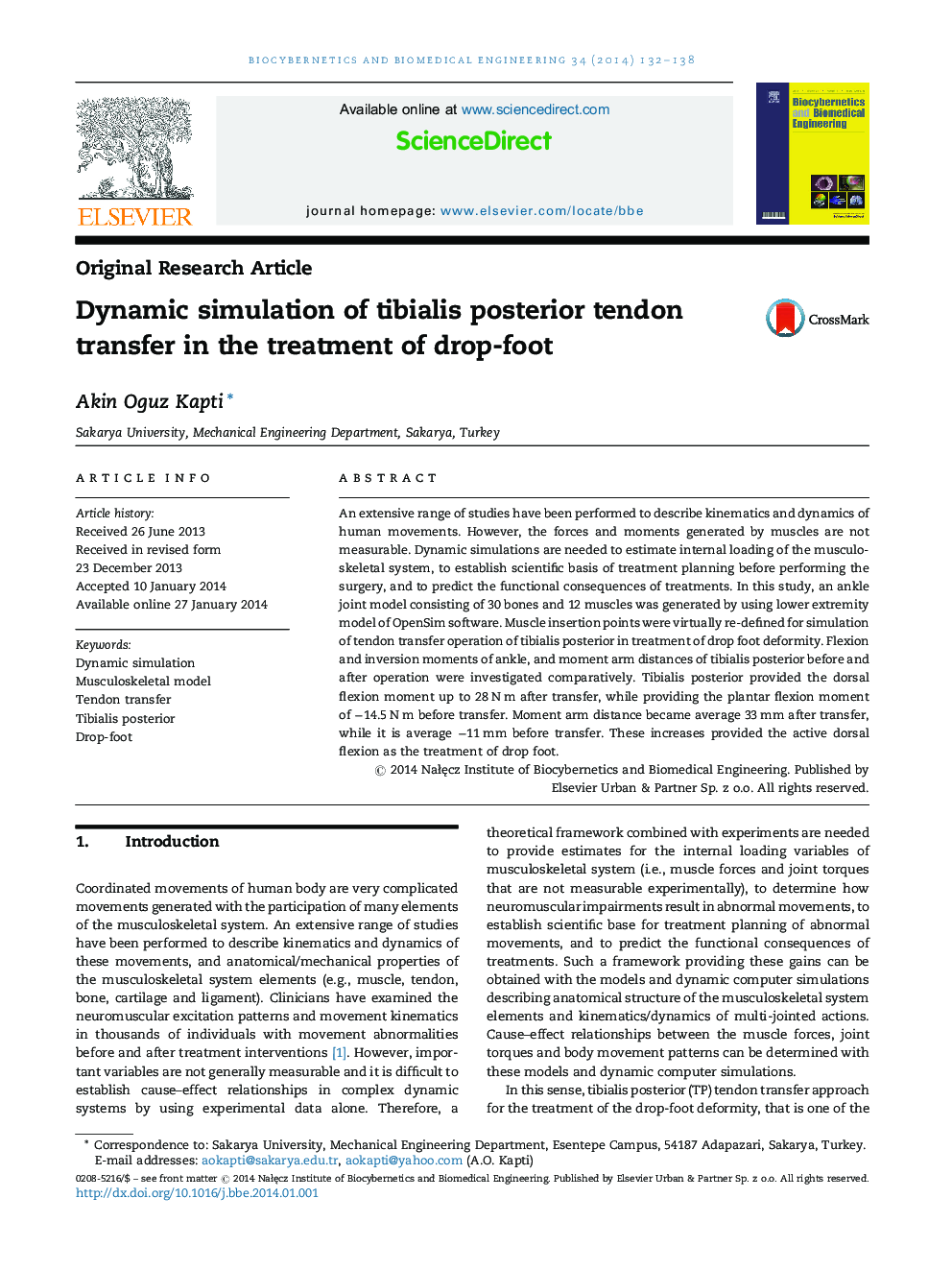| Article ID | Journal | Published Year | Pages | File Type |
|---|---|---|---|---|
| 5196 | Biocybernetics and Biomedical Engineering | 2014 | 7 Pages |
An extensive range of studies have been performed to describe kinematics and dynamics of human movements. However, the forces and moments generated by muscles are not measurable. Dynamic simulations are needed to estimate internal loading of the musculoskeletal system, to establish scientific basis of treatment planning before performing the surgery, and to predict the functional consequences of treatments. In this study, an ankle joint model consisting of 30 bones and 12 muscles was generated by using lower extremity model of OpenSim software. Muscle insertion points were virtually re-defined for simulation of tendon transfer operation of tibialis posterior in treatment of drop foot deformity. Flexion and inversion moments of ankle, and moment arm distances of tibialis posterior before and after operation were investigated comparatively. Tibialis posterior provided the dorsal flexion moment up to 28 N m after transfer, while providing the plantar flexion moment of −14.5 N m before transfer. Moment arm distance became average 33 mm after transfer, while it is average −11 mm before transfer. These increases provided the active dorsal flexion as the treatment of drop foot.
